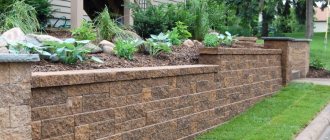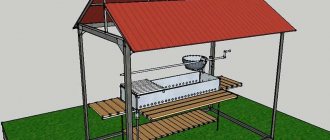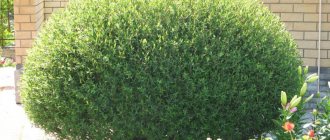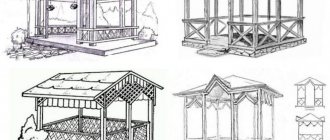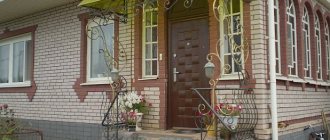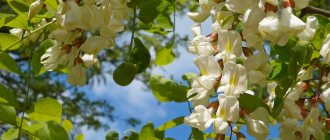In recent decades, covering material has been increasingly used in home garden vegetable growing. There are many varieties of it, so many gardeners, especially beginners, do not know which option is better.
Let's talk about the types of material and the specifics of its application. Let's compare the qualities and tell you which shelter is better for specific purposes.
Types of non-woven covering material
For nonwoven materials, along with color, the density of the fabric, which is measured in g/sq.m., will be important. As for manufacturers, there is no significant difference between them.
Types by density
The lower the density of agrofibre, the lighter it is. At the same time, strength decreases, so the scope of application of the material will be different.
- Fiber with a density of 17-30 g/sq.m. It is used to protect plants and fruits from birds and insects; it is also used to shade plants in hot weather. This material perfectly allows air and moisture to pass through, while being lightweight, the plants are not damaged. Often it is thrown over the beds without any frame.
- Fiber 42-60 g/sq.m. has a high density. It is used to protect plants from light frosts. To do this, the material is stretched onto a steel or wooden frame, which is built along the bed.
- Fiber with a density of 60 g/sq.m. often used instead of mulch. It perfectly passes moisture and air through itself, but prevents the penetration of ultraviolet radiation to the soil surface, which prevents the growth of weeds.
For strawberries, agrofibre with a density of 60 g/sq.m is most often used. As a result, it is easier to care for plantations and there is less rotting of berries. Thanks to the permeable structure, there are no difficulties with applying liquid fertilizers, which is also important when growing berries on an industrial scale.
For use in garden beds, it is better to buy material with added carbon. It absorbs solar energy and provides plants with the necessary heat. This speeds up fruiting.
Types by manufacturer
In stores you can find non-woven material from different manufacturers. For example, Spunbond, which is so popular among gardeners that materials from other brands may also be called that.
Agrotex
The non-woven material of this company is used to accelerate fruiting - the harvest can be obtained about 2 weeks earlier. Agrotex qualities:
- water permeability;
- breathability;
- strength.
Agrotex protects plantings from hail and heavy rain, and prevents frost damage down to -2°C. It is advisable for them to protect the beds in the spring, when there is a danger of cold dew.
Agrotex belongs to the category of environmentally friendly materials
Agrospan
Agrospan is one of the all-season covering materials: it can be used almost all year round. Can be used to protect seedlings, young seedlings, shrubs and adult plants from the scorching sun and light frosts.
Agrospan is produced in the form of white and black material of different densities. Black Agrospan is widely used for mulching berry crops, including strawberries. White agrospan is suitable for greenhouses, greenhouses and beds on light arcs.
Gardeners successfully protect the trunks of young trees from sunburn using this material.
Lutrasil
Lutrasil is often used for plants that are harmed by condensation. Scope of application varies:
- thermoselect with a density of up to 17 g/m² - shelter for protection from frost;
- frostselect - for protection from frost down to -6°C;
- lutrasil with a density of 42 and 60 g/m² - for the construction of greenhouses and greenhouses.
There is Lutrasil grade 60 UV, which is used for mulching beds. Thanks to the protective layer, such fiber can be left on the soil for several years.
Lutrasil is stretched in film and polycarbonate greenhouses to protect plants from condensation.
Spunbond
The most popular agrofibre, which can be white or black. Regardless of the color, spunbond allows moisture and air to pass through well, protects against burns from direct sunlight, and does not interfere with the penetration of heat.
The scope of application depends on the brand:
- SUF 17 - for protection against pests and shading;
- SUF 30 - for protection against light frosts and cold spells, stretched over the frame;
- SUF 42 - for protection against frost down to -3 °C.
Spunbond SUF 60 is used to protect plantings from frost down to -6 °C, as well as to protect young seedlings from rodents.
Spunbond is durable and withstands sunlight well.
Agril
Agril is used in situations where it is necessary to create diffused sunlight for plants. At the same time, it is able to retain heat emanating from the ground, and therefore is used to protect plantings from frost.
There is positive experience in using Agril as a mulch layer. In this case, the moisture will not evaporate, the good structure of the soil will be maintained, and the roots will receive a sufficient amount of air. For this purpose, use black material with a density of 50 g/m², which is spread over the surface of the bed and pressed down around the perimeter. This way you can mulch plantings of berries and vegetables.
Agril with a density of 40 g/m² is suitable for greenhouses and greenhouses of arched or English shape.
Shading nets
This material is not exactly covering material, but it is widely used by gardeners and gardeners, so it deserves attention.
The shading net performs the only function - it protects the plantings from the scorching rays of the sun. It can be placed on top of potatoes, cabbage, tomatoes, cucumbers, young seedlings, currant bushes, raspberries and gooseberries. In fact, the net is suitable for any plants. When working for a long time in a raspberry or other berry garden, the gardener himself can hide from the sun under the net.
The basis for the manufacture of shading fabric is polypropylene film. It contains a UV stabilizer, which achieves a scattering effect. White and green nets are produced, but upon request, manufacturers produce canvases of any colors. The length is not limited, the width is 3 m.
These are the main materials used to cover soil and plants in open and closed ground. What to choose is up to the gardener to decide, and he must take into account the purpose, service life and price, which differs significantly from different manufacturers.
Types of polyethylene film
There are several types of polyethylene film. In some cases, it is economically feasible to use this material rather than agrofibre. The film can last longer, and in some respects it is superior to non-woven materials. In addition to regular polyethylene film, there are also improved varieties.
Reinforced polyethylene
This film is made by combining two or three layers with a reinforcing mesh placed between them. Some models are distinguished by the addition of UV stabilizers that prevent the destruction of polyethylene by sunlight.
Scope of application of reinforced polyethylene:
- for unheated greenhouses;
- for heated greenhouses;
- for greenhouses of different heights.
The strength of reinforced polyethylene film is such that the material can easily withstand hail and strong winds. In the southern latitudes of the country, the film lasts for 3 years, in the conditions of central Russia and further north - up to 5 years.
You can extend the life of this covering material if you remove it for the winter and put it away for storage.
Film with light stabilizer
Light-stabilized polyethylene is used in greenhouses located in regions with a lot of sunny days. This material is obtained by adding special additives that increase resistance to ultraviolet radiation.
Dyes can be added to light-stabilized polyethylene. Thus, orange film is used on farms to accelerate fruiting - it provides the necessary spectrum of light to plants.
Double layer film
This covering material has two layers of different colors - black and white. It is used exclusively for mulching beds, for which the film is laid with the black side down.
A two-layer film prevents the soil from overheating, but does not allow it to be properly moistened and does not allow air to pass through. Therefore, its scope of application is limited.
Reviews from summer residents
I want to warn gardeners against making mistakes. I bought black non-woven material so that the air in the greenhouse would not become waterlogged. I thought it was a great success, because we rarely have it on sale. I spread it out as indicated in the instructions, made slits for the seedlings, but it turned out that the material allowed moisture to pass through. The greenhouse was not ventilated, so dampness developed and the seedlings became sick. Now I will use all new products carefully.
Tamara Ivanovna, Omsk
In the summer we always use Lutrasil and Acrylic, or Ogril, I don’t know exactly what they call it, my husband buys everything. In winter for roses - Obernite. Our neighbor leaves reinforced film on the greenhouse for the winter and says that it is durable and does not deteriorate. This year we also decided to do the same, and the result was a lot of snow, and our covering material was torn. It's a shame, but now we'll be smarter.
Valentina Galichenko, Torez
We have been using spunbond at our dacha for 4 years now.
We cover the strawberries and vegetable beds after sowing, then the plants lift the canvas with their leaves. We take pictures when the weather gets warm. It is very convenient: the soil under the agrofibre breathes, but does not dry out, and there is no need to mulch. The downside: when it rains, you need to cover the beds with film, because the spunbond gets wet and becomes heavy, and all the water seeps through it. Svetlana, Balakhna
Which is better, spunbond or film?
To answer this question, you need to understand for what purpose you plan to use the covering material. In some places it is better to use spunbond, and in others polyethylene.
Spunbond perfectly allows water and air to pass through, and even high-density material is lighter than polyethylene. Good air exchange prevents the creation of a greenhouse effect under the covering material, but at frosts below -6 °C it will play a negative role. Spunbond is often used for shading plants, protecting them from temperature changes, insect pests and birds.
Polyethylene does not allow moisture and air to pass through, and therefore retains heat well. During hot weather, plants under polyethylene will overheat and may die within a day if ventilation is not provided. It also makes watering and applying liquid mineral fertilizers more difficult—the polyethylene must be removed each time.
Typically, it is better to use polyethylene in early spring, when there is a danger of frost below -6°C, and during the day the sun does not warm up strongly enough. Starting from May and in the summer, it would be more correct to cover the plantings with agrofibre. It will protect plants from overheating and harmful insects.
For greenhouses and greenhouses, it is better to use film - it is stronger, can withstand strong gusts of wind, and reinforced film can withstand hail.
If you need to cover the structure with spunbond, you need to choose the highest density, up to 150 g/sq.m.
Polycarbonate as an option for a modern greenhouse
In addition to the film with arcs, you can build a more durable frame for growing plants - from polycarbonate. Its advantages are reliable protection from wind, sun, precipitation, birds and animals. It does not allow contamination of the soil surface by weed seeds, but maintains an excellent optimal temperature.
Polycarbonate greenhouse
Polycarbonate sheets are light and durable, flexible and practically do not burn. According to the structure of the sheet, which determines its strength, there are three main varieties:
- single-chamber in 4, 6, 8 or 10 mm thickness;
- two-chamber 16 mm;
- reinforced in 4 and 6 mm;
- four-chamber 25 mm.
The color scheme is also different and affects the light transmittance of the material.
The best covering material for tomatoes
Tomatoes have one specific feature: the plants do not tolerate moisture on the leaves. Therefore, they must be protected from condensation when grown in film greenhouses, and in open ground - from dew and heavy rain.
For this purpose, it is good to take agrofibre with a density of 17 or 19 g/sq.m. It is lightweight, and therefore can be simply thrown over plants without using a frame. The shelter does not need to be removed if the season is rainy: the tomato bushes will grow and lift the material.
In greenhouses, you can stretch agrofibre with a density of 23 g/sq.m over the tomatoes - it will protect the leaves from condensation.
Pest protection
In order to protect against above-ground pests, such as insects, it is best to use white non-woven material that is not of the highest density (the density will depend on how young and weak the sprouts are - light is used for small ones, denser for older seedlings).
You can cover the bed of unprotected soil with a white non-woven fabric immediately after sowing.
Experienced gardeners advise sewing bags of non-woven material individually for each head of cabbage. Thus, they will be reliably protected from all pests that encroach on the integrity of the leaves.
Which covering material is best for greenhouses and greenhouses?
Polyethylene film is ideal for permanent greenhouses and greenhouses: it is what is used in subsidiary farms throughout the country. You can select the covering material based on the required length and width, as well as additional qualities - color, elasticity, resistance to sunlight, breathability. Correctly selected polyethylene can compete in properties with high-quality spunbond.
Most types of films have a long service life. Manufacturers guarantee a service life of up to 5 years, but in practice, after 3 years, strength and light transmittance indicators decrease. To avoid problems, it is better to change the coating every 3 years.
Elastic film for greenhouses
In regions with strong winds, as well as in open areas, it is better to use ethylene vinyl acetate film. It is highly elastic - it can stretch like rubber. At the same time, the material can withstand severe frosts and does not lose its properties when exposed to sunlight for 3 to 5 years.
Ethylene vinyl acetate film is demanding on the quality of the frame. It is unacceptable that there are sharp corners or knots on which the material can catch and tear in a strong gust of wind.
Thermal insulating film for greenhouses
Any polyethylene retains heat well, but heat-insulating film copes with this task best. It is easy to detect in the store: the material has a greenish tint, in some cases a matte white color.
The peculiarity of the heat-insulating film is that the air temperature underneath will be 5 °C higher than outside. This covering material will protect plants from frost and nighttime drops in temperature. The film is widely used in regions with unstable temperatures in early spring.
Hydrophilic film for greenhouses
For greenhouses in which you plan to grow cucumbers, you can use almost any film. It’s another matter if you plan to plant tomatoes that do not like moisture on the leaves. To protect against condensation, you can use lutrasil, but it’s easier to go the other way.
You can find hydrophilic film on sale. It is easy to identify by the blue tint that is obtained when a special composition is added to the material. It repels moisture, so condensation does not linger on the surface, but flows down the roof of the greenhouse to its edges.
Hydrophilic film can be used on the greenhouse all season long - it is highly resistant to ultraviolet radiation.
Weed control
Mulch prevents weeds from growing. The principle of limiting the growth and spread of weeds is simple - a dark shelter that does not allow sunlight to pass through, which is necessary for the growth of weeds. It can be thick black non-woven material or black film.
Related article: How to get rid of weeds and grass forever?
Using film is less effective. Although it will protect against weeds, it will require numerous manipulations. It will have to be lifted to water, removed from time to time for ventilation, and monitored so that the plant roots do not overheat.
It is good to grow garden strawberries on black film. Watering is carried out drip-wise under the film or into holes left slightly wider than the diameter of the strawberry bush. Berries that receive more sun, which attracts the black color, ripen faster, are larger in size, and have a sweeter taste. In addition, being located on a film and not on the ground, strawberries are not damaged by slugs, do not rot and remain dry and clean in any weather.
Weed protection with black non-woven material can also be provided on paths. Moisture will penetrate through it, absorbing into the soil, but weeds will not grow. The garden will take on a well-groomed and clean appearance.
Foliage
Photo: Shutterstock.com
Every summer resident has plenty of this organic material.
But it is not suitable for mulching beds and tree trunks due to its special properties. This material absorbs moisture well and gets wet from rain and melted snow. Under it, the conditions of an artificial mini-greenhouse are created, where the humidity is high. Of course, such environmental factors provoke the appearance of fungal diseases. This is also bad for ventilation: the air under the mulch stagnates and the plants begin to warm up.
Features of the Agrospan canvas
One of the popular brands of spunbond is Agrospan. It is incorrect to say which is better, Agrospan or spunbond: the first material is a variation of the second. Agrospan has certain advantages over other brands, which is why it is valued by gardeners. Non-woven covering fabric has increased resistance to ultraviolet radiation, so it lasts for several seasons even in high mountain areas.
The effect of use is manifested as follows:
- plants suffer less from changes in day and night temperatures;
- the fruiting period is extended by 20-30 days, and in some crops - until late autumn;
- vegetables and berries are not damaged by pests and diseases;
- water consumption for irrigation is reduced;
- crops do not overheat during the day and do not overcool at night;
- a favorable microclimate is maintained under the material.
Vegetables, herbs and berries receive everything they need for full development and the formation of a bountiful harvest: light, warmth, fresh air and moisture. Like other brands of spunbond, Agrospan varies in density. Scope of application - standard (see table).
Sackcloth
Photo: Shutterstock.com
It is made from hemp processing waste. There are two types - natural or with the addition of synthetic fiber.
Due to its special structure (in the form of a mesh), air passes through the material well.
Absorbs moisture. During short-term thaws with rain, and then the coming frosts, it turns into an ice structure. Sometimes the plants under the burlap are propped up.
Decorative linen burlap. Cost – 300 rubles/m2 (roll width 100 cm), hemp burlap – 60–70 rubles/m².
Life hack: some goods for the garden or building materials are sold in burlap, summer residents never throw them away, they leave them for shelter.
Lapnik
Photo: Shutterstock.com
It can be collected in the forest, but cutting or breaking off tree branches yourself is prohibited by law.
Branches of coniferous plants are used to cover beds of winter crops, seedlings and flowers. The advantages of this material are its naturalness.
It has been noticed that pine needles falling on the soil can acidify it. But this is not the greatest damage caused by spruce branches. Conifers carry a dangerous disease - rust. In the spring, it will immediately move to fruit and berry crops.
By the way
Whatever shelter you choose, be sure to check in January how it protects your plants. If water appears under it, dig a ditch so that it goes away and ventilate the shelter.
Ready for winter. Tips for covering plantings and dacha structures Read more
Frost protection
The main goal of all gardeners in the middle zone is to protect plants from spring and autumn frosts. In spring, early warming of the soil gives an early harvest, and the planted seedlings remain undamaged by returning cold. In the fall, non-cold-resistant plants take shelter, which helps them survive the winter and enter the growing season again.
Any covering material can be used to protect against frost. If this is greenhouse protection, film is more suitable than non-woven fibers. If you need to directly wrap each rose bush before winter, a white dense non-woven material is ideal.
